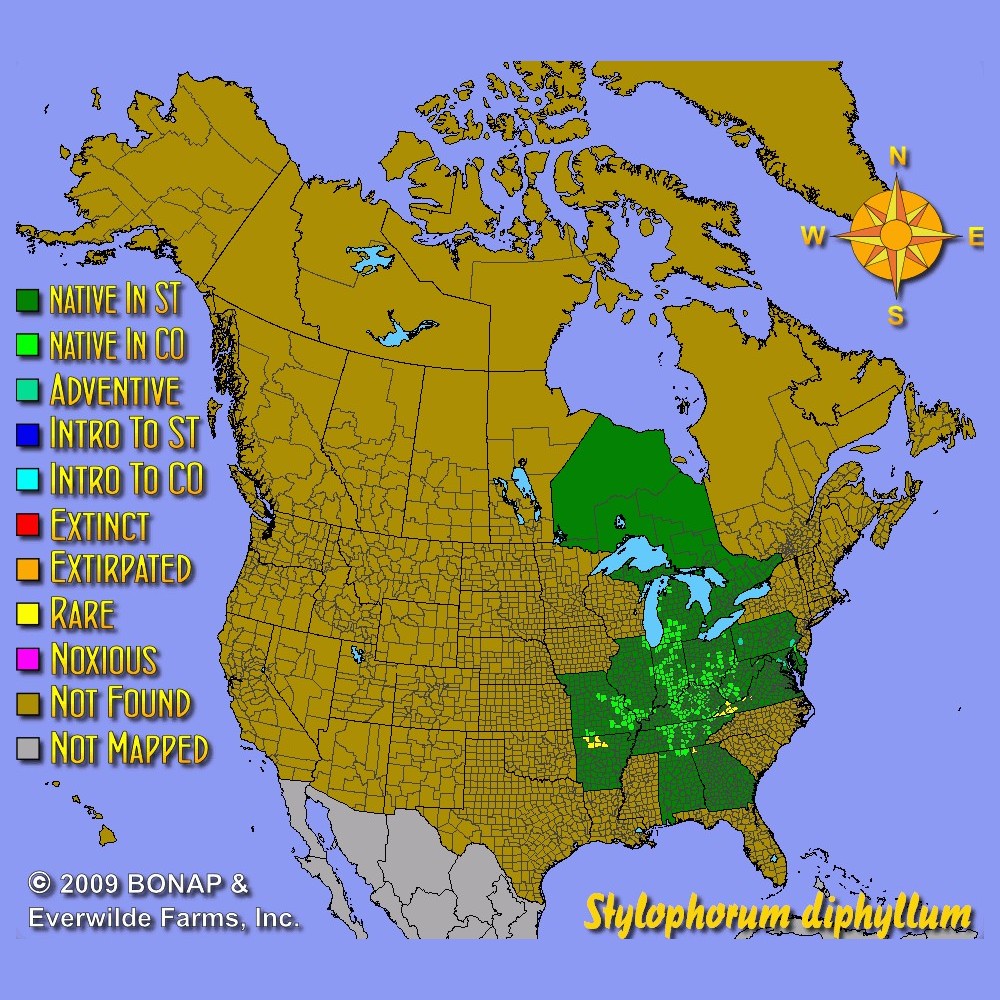Celandine Poppy Seeds
- HOW TO GROW
- FAST FACTS
- REVIEWS
HOW TO GROW
Sowing: To break their dormancy, these celandine poppy seeds need to experience a warm moist period followed by a period of cold moisture. Mix the Stylophorum Diphyllum seeds with a small amount of damp sand and place them in a sealed plastic bag; store at 75-80 degrees F for 60 days, then in the refrigerator for another 60 days. Sow the seed just below the surface in a germination flat, keeping the soil lightly moist and at room temperature until germination. Alternatively, this celandine poppy seed can be direct sowed outdoors in late fall and allowed up to a year to germinate.
Growing: As the plants grow, keep the soil consistently wet; this plant loves moisture, and thrives in marshy ground or moist woodland soil. Insufficient moisture in the heat of summer may cause early dormancy. This plant will self-seed in good growing conditions. Mature plants can be divided. This plant makes an excellent ground cover for deeply shaded areas.
Harvesting: These blossoms do not perform well as cut flowers, and are best enjoyed outdoors.
Seed Saving: After the flowers fade, the fuzzy oblong seed pods will form. As soon as the celandine poppy seed inside have matured to dark brown or black, remove the pods and spread them out to dry away from direct sunlight. Separate the Stylophorum Diphyllum seeds from the pods and store them in a cool, dry place.
FAST FACTS
Common Names: Wood Poppy, Poppywort, Yellow Poppy
Latin Name: Stylophorum diphyllum
Species Origin: US Native Wildflower
Type: Native Wildflowers
Life Cycle: Perennial
USDA Zones: 5, 6, 7
US Regions: Midwest, Northeast, Southeast
Seeds per Ounce: 12,400
Stratification: Warm/Wet for 12 Weeks, then Cold/Wet for 12 Weeks - Repeat
Germination Ease: Stratify 24 Weeks
Sunlight: Part Sun, Shade
Height: 12 Inches
Color: Yellow
Bloom Season: Blooms Early Spring
Celendine Poppy
These are going to look awesome!!!
Too early to say…
I have not yet planted the wood poppy seeds do I am unable to comment on the quality of the product. However I will say your website is "user friendly", the product is reasonably priced, and delivery was speedy????
Awesome!
DESCRIPTION

HOW TO GROW
Sowing: To break their dormancy, these celandine poppy seeds need to experience a warm moist period followed by a period of cold moisture. Mix the Stylophorum Diphyllum seeds with a small amount of damp sand and place them in a sealed plastic bag; store at 75-80 degrees F for 60 days, then in the refrigerator for another 60 days. Sow the seed just below the surface in a germination flat, keeping the soil lightly moist and at room temperature until germination. Alternatively, this celandine poppy seed can be direct sowed outdoors in late fall and allowed up to a year to germinate.
Growing: As the plants grow, keep the soil consistently wet; this plant loves moisture, and thrives in marshy ground or moist woodland soil. Insufficient moisture in the heat of summer may cause early dormancy. This plant will self-seed in good growing conditions. Mature plants can be divided. This plant makes an excellent ground cover for deeply shaded areas.
Harvesting: These blossoms do not perform well as cut flowers, and are best enjoyed outdoors.
Seed Saving: After the flowers fade, the fuzzy oblong seed pods will form. As soon as the celandine poppy seed inside have matured to dark brown or black, remove the pods and spread them out to dry away from direct sunlight. Separate the Stylophorum Diphyllum seeds from the pods and store them in a cool, dry place.
FAST FACTS
Common Names: Wood Poppy, Poppywort, Yellow Poppy
Latin Name: Stylophorum diphyllum
Species Origin: US Native Wildflower
Type: Native Wildflowers
Life Cycle: Perennial
USDA Zones: 5, 6, 7
US Regions: Midwest, Northeast, Southeast
Seeds per Ounce: 12,400
Stratification: Warm/Wet for 12 Weeks, then Cold/Wet for 12 Weeks - Repeat
Germination Ease: Stratify 24 Weeks
Sunlight: Part Sun, Shade
Height: 12 Inches
Color: Yellow
Bloom Season: Blooms Early Spring
Reviews
Review
Celendine Poppy
These are going to look awesome!!!
Review
Too early to say…
I have not yet planted the wood poppy seeds do I am unable to comment on the quality of the product. However I will say your website is "user friendly", the product is reasonably priced, and delivery was speedy????
Review
Awesome!





